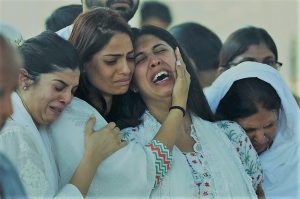In the wake of one of the deadliest attacks on civilians in Kashmir in decades, fear and uncertainty grip the valley as India and Pakistan trade fire across the Line of Control (LoC). The overnight exchange of gunfire—thankfully sparing civilian areas—has escalated tensions between the two nuclear-armed neighbors, reigniting old wounds and deepening a diplomatic crisis.
The attack, which claimed the lives of 26 innocent people at the popular tourist destination of Pahalgam, has left families shattered and communities in mourning. It wasn’t soldiers who fell this time—it was ordinary men, women, and children caught in the wrong place at the wrong time. Survivors describe scenes of horror as gunmen appeared from the forests and opened fire with ruthless precision. Some lived only because they could recite a line of faith.
India, shaken by the brutality, responded swiftly and sternly. Prime Minister Narendra Modi vowed to bring those responsible to justice, declaring, “India will identify, track and punish every terrorist and their backer.” His words resonated across the country—a mix of grief, anger, and resolve.
Indian authorities identified the attackers as members of Lashkar-e-Taiba, a group based in Pakistan and listed internationally as a terrorist organization. In response, New Delhi suspended a decades-old water-sharing treaty, closed key borders, downgraded diplomatic ties, and cancelled visas for Pakistani nationals. The government also launched massive military drills and placed a bounty on the fugitives.
Islamabad, denying involvement, called the accusations “baseless” and warned against any Indian aggression, promising “firm reciprocal measures.” As tension flares, the people on both sides of the border—especially those living near the LoC—brace for what may come next.
The United Nations, watching with concern, urged both sides to show restraint and return to dialogue. But as diplomatic channels freeze and military readiness increases, hope feels distant for many.
Kashmir remains the heart of this conflict—a paradise long torn between competing claims and generations of bloodshed. But behind the politics and power plays are real people: mourning families, terrified villagers, displaced students, and children too young to understand the gunfire echoing in the hills.
In moments like this, the world must be reminded—every bullet has a cost, and every life lost is a universe undone. Will we let history repeat itself again, or will humanity find a voice louder than the guns?







